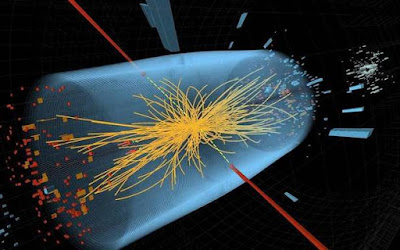Today (February 4, 1974) is the Memorial Day of Padma Vibhushan Satyendra Nath Bose, the great scientist who led the creation of Bose-Einstein quantum physics.

Satyendra Nath Bose was born on January 1, 1894, in Kolkata. He scored 110 out of 100 in the final exam during his school days. The reason is that the same maths was put in different ways. He then went on to win a gold medal in physics in college. The time he studied at Calcutta State College was the golden age of Bengal. If you know Einstein you should know Bose as well. Such was his contribution to the field of quantum physics. He created Quantum Statistics, a subdivision of the field of quantum mechanics. He is not only interested in science. He was also a musician who was fluent in five languages.


Planck wrote an equation based on conjecture in his book Thermodynamic and Wormstrolong, which led to the formation of quantum physics. Satyendranath, who had the aim of not accepting any opinion unless it was beyond your doubt, could not accept Blank's method. Bose-Einstein statistics was born out of the fact that it was immediately modified by a different method. Bose was thirty years old when he did this. Bose wrote an article on "Max Planck's Law" and "Light Quantum Hypothesis" in just six pages and sent it to Einstein. Einstein was astounded. The two combined the name and published it. It was that article that led Bose to the field of Einstein statistics. He did not have a doctorate at the time.


Can you find a better scientist than Bose in a letter written by Einstein? "Immediately Bose became a professor at the University of Dhaka. Both were interested in learning about and teaching revolutionary new theories in current physics, and after great difficulty received a dissertation on Einstein's theory of relativity, only to find out that the article was in the German language, and that Bose was not discouraged! Both read the dissertation and translated it into English.


They are credited with being the first English translators of Einstein's theory of special relativity. He continued to do research in countless other disciplines. It would not be an exaggeration to say that his essays were a bridge between the quantum theory of Einstein Plank et al. And the quantum mechanics of Drake Heisenberg et al. The Nobel Prize-winning scholar of war stumbled upon a speech. "Can you explain this a little bit?" He opened his eyes and sat down with his eyes closed again.


Mother tongue instruction is essential, he said. Bose taught science in Bengali. Paul Dirac, the winner of the Nobel Prize in Physics, named the boson atmosphere after him. The Padma Vibhushan, India's second-highest award in recognition of his contribution to science, was awarded by the Government of India in 1954. Bose-Einstein Quantum physics scientist Satyendra Nath Bose passed away on February 4, 1974, in Kolkata at the age of 80.
Source By: Wikipedia
Information: Dr. P. Ramesh, Assistant Professor of Physics, Nehru Memorial College, Puthanampatti, Trichy.
Get information like this
https://t.me/joinchat/jpqj3jQLN51kYTk9
Join Telegram Group.
https://chat.whatsapp.com/FisIzCe4Br2CRgxAiicUnf
Join WhatsApp Group
Thanks.
Also, Read
🛑👍 CSIR-NET Physics Materials and Problems
🛑📕 21 GB and Hundreds of Physics E-Books Collection.
🛑🛥️ How does an Electric Motor work? (DC Motor).
🛑🤹♂️ Science Academies' Summer Research Fellowship Programme for Students and Teachers 2022.
🛑🔌 How does a Transformer work - Working Principle electrical engineering.
🛑🎙️ Transistors Explained - How transistors work.
🛑🔥⚡ How Thermocouples Work - basic working principle.
🛑🔌 Voltage Explained - What is Voltage? Basic electricity potential difference
🛑🔌 What is CURRENT– electric current explained, electricity basics.


.jpg)
No comments:
Post a Comment